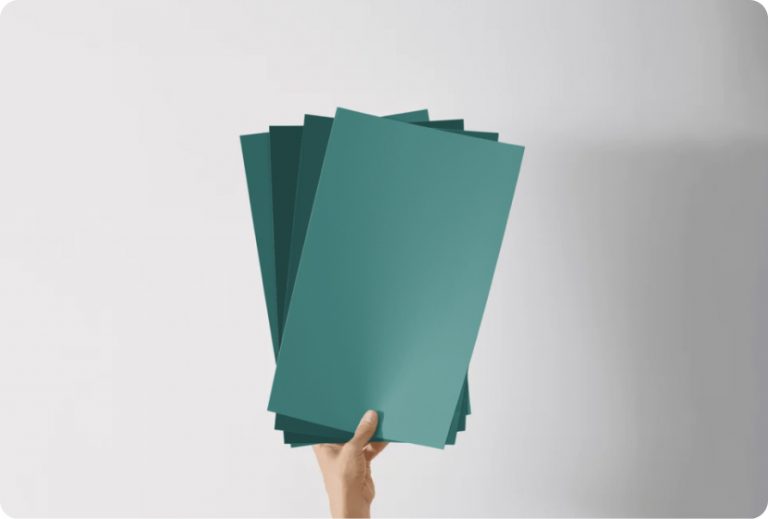As someone always on the lookout for the perfect paint color, I was intrigued by HC-149 Buxton Blue from Benjamin Moore. This color offers a unique blend of calmness and vibrancy that doesn’t overpower an area but rather enhances its overall charm. Buxton Blue belongs to the Historical Collection, which helps in preserving the authentic color heritage of American homes.
In my search for a hue that would reflect both a sense of serenity and elegance, Buxton Blue stood out amidst an ocean of options. Its refined yet subtle tone makes it ideal for various areas—whether you’re updating your living room, bedroom, or even the bathroom. The color itself has a soothing effect, making it a superb choice for anyone looking to create a peaceful atmosphere in their home.
Moreover, pairing it with complementary colors or decor can enhance its beauty, creating a balanced and inviting environment. I’ve found that natural wood tones and soft whites make excellent companions for Buxton Blue, setting a classic, enduring vibe in any room.
If you’re considering a new color scheme, consider how Buxton Blue might change your area into a comforting haven with lasting appeal.

What Color Is Buxton Blue HC-149 by Benjamin Moore?
Buxton Blue HC-149 is a standout color from Benjamin Moore’s Historical Collection that offers a fresh yet calm vibe. This particular shade of blue has a subtle hint of gray, making it adaptable and easy to integrate into any home. Its softness allows it to bring light and a sense of area into smaller rooms, while still providing enough depth to make large areas feel cozy and inviting.
Buxton Blue works exceptionally well in a variety of interior styles, especially coastal, Scandinavian, and modern farmhouse. These styles benefit from its clean, crisp nature, which pairs beautifully with natural elements and neutral tones. In coastal settings, think of it alongside sandy beiges and soft whites to mimic the beach surroundings.
For a Scandinavian look, combine it with minimalist furniture and organic textures like wood and wool to enhance the natural feel. In a farmhouse setting, juxtaposing Buxton Blue with rustic elements such as reclaimed wood furniture or wicker baskets can create a charming and welcoming atmosphere.
The color also goes well with a range of materials and textures. It looks particularly striking against white trim or when used in a kitchen with marble countertops. Metallic finishes like brushed nickel or aged brass also complement its cool tones nicely, adding a touch of elegance without overpowering the room. Whether you use it as an accent wall, on kitchen cabinets, or throughout a bedroom, Buxton Blue is adaptable and stylish.
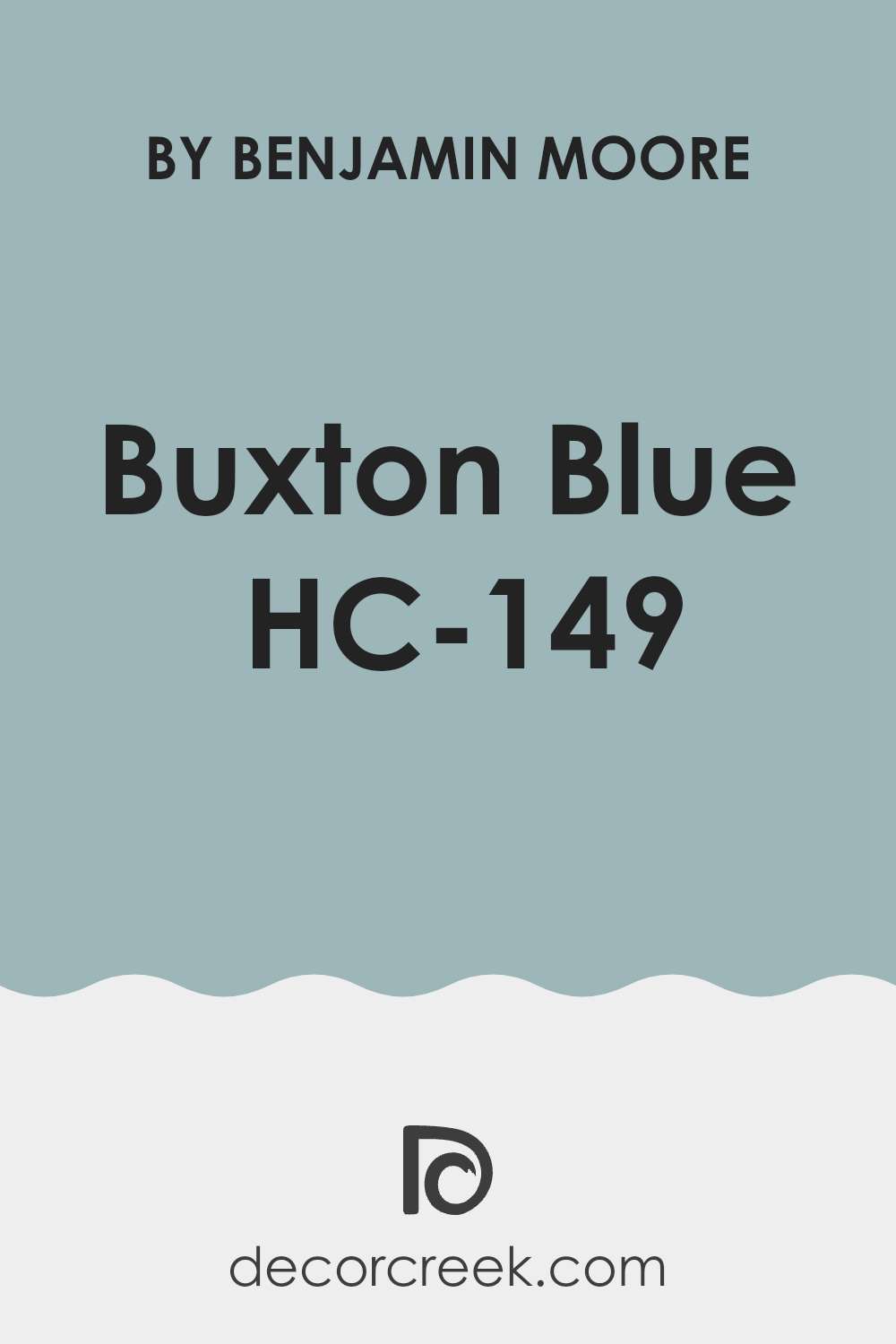
Is Buxton Blue HC-149 by Benjamin Moore Warm or Cool color?
Buxton Blue by Benjamin Moore is a fresh and airy shade of blue that brings a calm and light atmosphere to any room in the house. Its adaptability means it works well in living rooms, bedrooms, and bathrooms alike, providing a backdrop that pairs beautifully with both modern and traditional decor.
This color has a subtle warmth to it that makes areas feel welcoming and comfortable, without being too bold or overpowering. It’s especially effective in brightening rooms that don’t get a lot of natural sunlight, as its light-reflective qualities can make smaller or darker areas seem larger and more open.
When matched with white trim and accents, Buxton Blue can create a crisp and clean look; however, it also pairs nicely with darker woods and rich textures, adding a gentle contrast and depth to the area. Overall, this color is a great choice for anyone looking to refresh their home with a soft, inviting vibe.
Undertones of Buxton Blue HC-149 by Benjamin Moore
Buxton Blue is a unique paint color because it carries various undertones, subtly influencing how it appears in different lighting conditions. With undertones like lilac, light gray, mint, light purple, grey, pale yellow, pale pink, turquoise, blue, light turquoise, and dark turquoise, this paint color brings a dynamic dimension to any room.
Undertones have a significant impact on how we perceive color. They can make the primary color look cooler or warmer, depending on the light and surrounding colors. For instance, lilac and light purple undertones in Buxton Blue might give a slight warmth and softness, making the area feel more welcoming.
On interior walls, the effect of Buxton Blue’s undertones is striking. In rooms with ample natural light, the mint and light turquoise undertones can make the walls seem vibrant and lively, while in less lit areas, grey and dark turquoise might dominate, giving a more subdued and calm feel. This adaptable nature makes Buxton Blue an excellent choice for various rooms, from light-filled living rooms to cozier, dimmer bedrooms.
The presence of these undertones means that the color can slightly change throughout the day, adapting and reacting to the changing light, which keeps the area interesting and dynamic. This characteristic makes Buxton Blue not just a paint but a component of the room that interacts with the time of day and furnishings, adding depth and interest to your home decor.
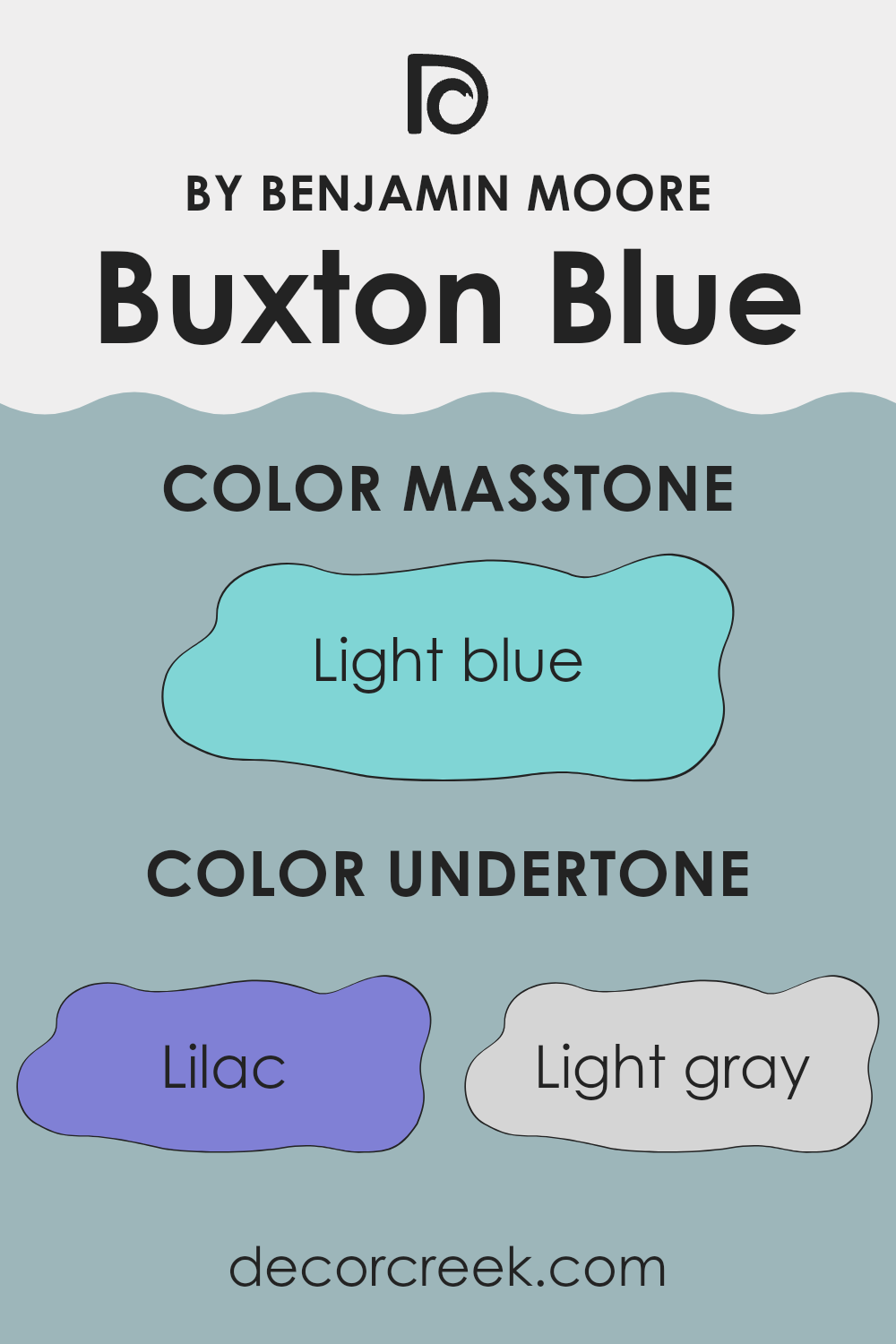
What is the Masstone of the Buxton Blue HC-149 by Benjamin Moore?
Buxton Blue HC-149 by Benjamin Moore is a light blue color with a soft and welcoming shade that can really open up an area. The masstone of this color, noted as Light Blue (#80D5D5), has just the right balance of brightness and calmness, making it an excellent choice for home interiors.
It suits well in rooms like bedrooms and bathrooms where a gentle and fresh feel is desirable. Because of its fairly neutral and light hue, it pairs nicely with a wide range of other colors, from crisp whites to earthy tones.
This adaptable nature makes it easy to use when decorating, whether one is looking to create a soothing retreat or a cheerful, lively area. Additionally, the light blue can help to reflect natural light, making smaller or darker areas appear bigger and brighter. This particular shade is functional and works well both as a main color and an accent.

How Does Lighting Affect Buxton Blue HC-149 by Benjamin Moore?
Lighting plays a crucial role in the way colors appear in an area. Depending on the light source, a paint color can look dramatically different. For example, the blue shade mentioned often shifts in appearance under various lighting conditions.
In artificial light, this particular blue can appear slightly more muted than under natural sunlight. Common household bulbs, which typically emit a warmer light, can soften this blue, making it lean a bit toward a calm grayish-blue at night. This makes it a comfortable choice for living areas where you want a more relaxed feel in the evening.
In natural light, the same blue looks more vivid and true to its color swatch. It reflects the outdoor light beautifully, presenting as a fresh and lively blue during the day. This makes it an excellent option for rooms that receive a lot of sunlight, as it enhances the room’s overall brightness and energy.
When placed in rooms with different exposures—the impact of natural light varies:
- North-faced rooms: These rooms get less direct sunlight, which can make the blue appear more subdued and in some cases, slightly darker. It’s ideal for creating a calmer, cozier ambiance in areas like bedrooms or studies.
- South-faced rooms: With ample sunlight throughout the day, the blue in these rooms will appear brighter and more dynamic. It’s perfect for living areas or kitchens where a cheerful, vibrant environment is desired.
- East-faced rooms: Morning light is cooler and can highlight the crisp aspects of the blue, making it feel refreshing in the morning, then transitioning to a softer hue as sunlight diminishes.
- West-faced rooms: As the sun sets, these rooms capture the warm, golden tones of the evening, which can make the blue appear softer and richer. This soothing environment is great for dining areas or sitting areas where relaxing at the end of the day is key.
Thus, this adaptable blue can adjust well to various lighting setups, making it a good choice for many different areas in a home.
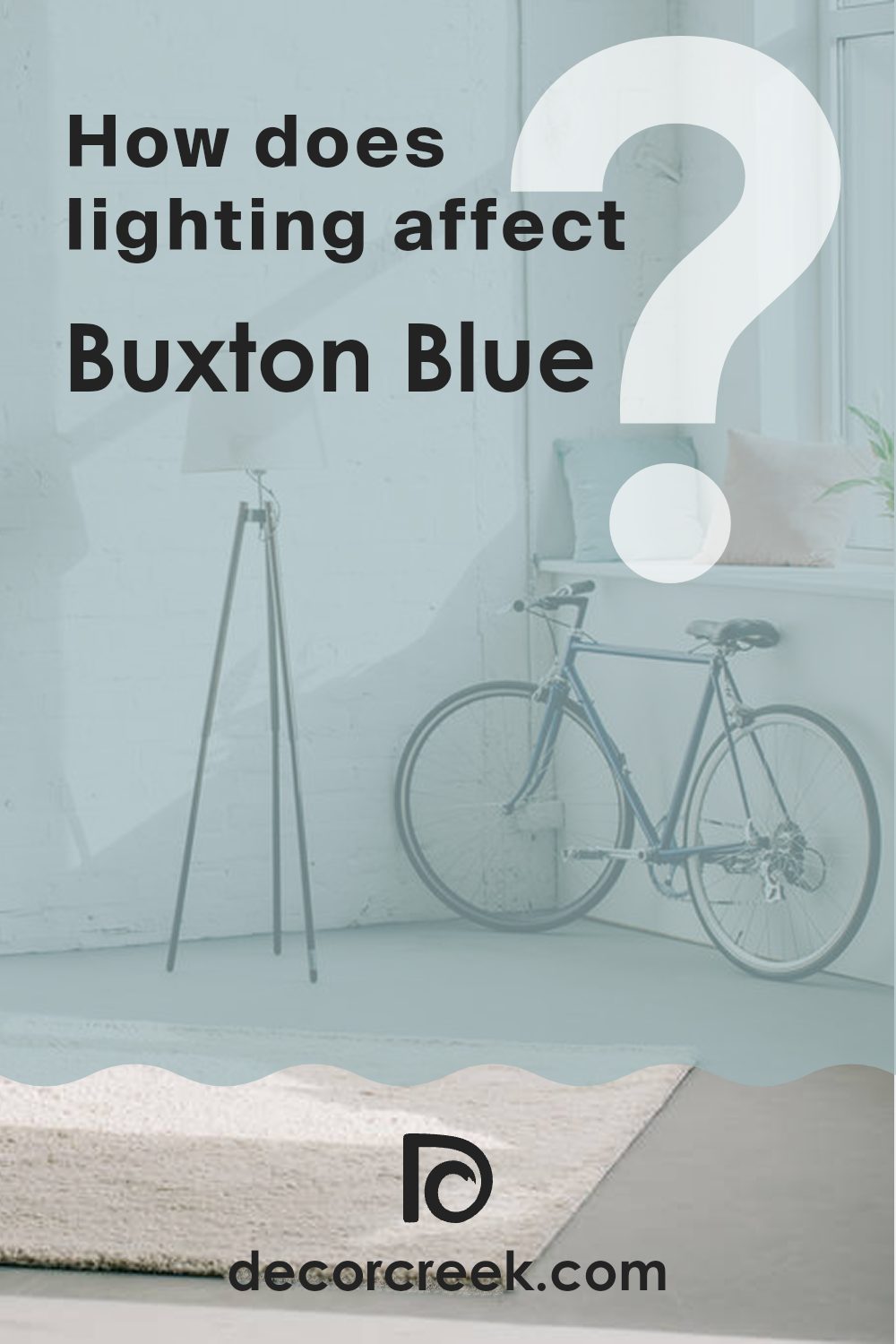
What is the LRV of Buxton Blue HC-149 by Benjamin Moore?
LRV stands for Light Reflectance Value, which is a measurement indicating the amount of visible and usable light that a paint color reflects or absorbs when it’s applied to walls or other surfaces. Essentially, this value can range from a lower value, which means the color absorbs more light and appears darker, to a higher value indicating the color reflects more light and appears lighter.
This measurement is crucial because it helps to determine how the color will look once it’s up on your walls under different lighting conditions. A paint with a low LRV might make a room feel smaller or cozier while a higher LRV can make an area feel more open and airy.
The LRV of Buxton Blue is 44.97, which places it in the mid-range of light reflectance. This means it neither reflects light excessively nor does it absorb too much light. In terms of how it affects the appearance of this particular color on your walls, it represents a balance that can be quite adaptable.
In rooms with ample natural light, the color will appear lively and vivid, whereas in areas with less natural light, it will present itself as more subdued and muted. This level of LRV makes Buxton Blue a reasonable choice for both well-lit environments and areas where lighting isn’t as strong, maintaining its distinct hue without leaning too heavily towards appearing too dark or too light.

Coordinating Colors of Buxton Blue HC-149 by Benjamin Moore
Coordinating colors work seamlessly to enhance each other, often used to create aesthetically pleasing and harmonious color schemes in interior design. These colors differ yet complement each other, providing balance within an area. For instance, the blue shades, neutral grays, and crisp whites are used cohesively to achieve a visual balance where each color supports the other.
Starting with Blue Danube, a deep and vivid blue, this color adds a bold and lively feel to interiors that can energize a room when paired with more restrained hues. Duxbury Gray, on the other hand, is soft and muted, offering a calm mid-tone gray that gently contrasts with darker or brighter colors. It provides a grounding effect, perfect for creating a relaxed environment.
Cloud Cover is a subtle off-white that serves as an excellent backdrop, helping other colors to stand out without overpowering areas with brightness. Lastly, White Heron is the cleanest of whites, offering a fresh and clean touch that can lighten up any area without dominating it. Together, these colors can create rooms that feel balanced, fresh, and inviting.
You can see recommended paint colors below:
- 2062-30 Blue Danube
- HC-163 Duxbury Gray
- OC-25 Cloud Cover
- OC-57 White Heron

What are the Trim colors of Buxton Blue HC-149 by Benjamin Moore?
Trim colors are the shades used to accentuate the architectural details of a room, such as door frames, moldings, and baseboards. These colors provide a visual contrast to help define the area and highlight the craftsmanship of a home. For a paint like Buxton Blue by Benjamin Moore, which is a rich and soothing tone, selecting the right trim color is crucial to enhance its appearance and draw attention to the subtleties of the hue.
Choosing lighter trim colors can create a beautiful contrast that makes the wall color pop and adds a clean, finished look to the area. Cotton Balls OC-122 is a gentle off-white with a soft touch that can brighten up areas while providing a subtle contrast to deeper tones like Buxton Blue.
It’s an adaptable color that works well in various lighting conditions, offering a fresh and airy feel to any room. White Heron OC-57 is another excellent choice for trim; it’s a pure, clean white that brings a crisp clarity to the edges where it is applied. This shade can really highlight the vibrant depth of Buxton Blue, making it stand out and giving the area a polished and well-rounded appearance.
You can see recommended paint colors below:
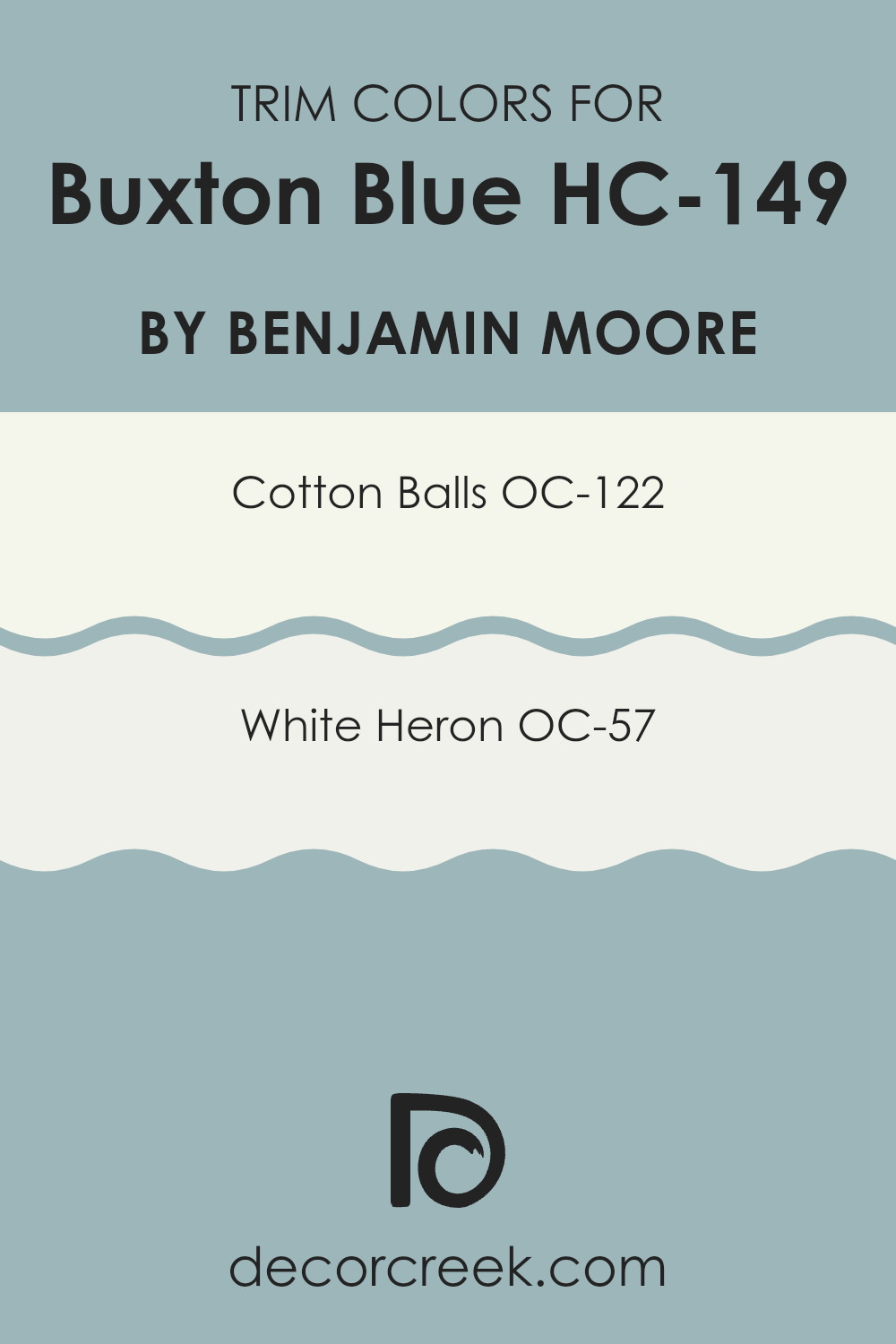
Colors Similar to Buxton Blue HC-149 by Benjamin Moore
Using similar colors in decorating can create a harmonious and pleasing environment. By selecting shades like Colorado Gray, Ocean City Blue, Cape Blue, and Exhale, each of which complements Buxton Blue, you can achieve a cohesive look that smoothly transitions from one area to another.
Similar colors work well together because they share a common hue base, making it easy to mix and match decor and furnishings without being excessive. This approach allows for a subtle variety that keeps the visual interest alive while maintaining an overall unity. Colorado Gray presents a gentle blue with a hint of gray, offering a calm and composed atmosphere that works well in soothing areas like bedrooms and bathrooms.
Ocean City Blue, slightly brighter, infuses an area with a refreshing hint of the sky, perfect for lively living rooms or energetic entryways. Cape Blue has a dusky depth that suits formal areas or offices, providing a backdrop that is both inviting and professional. Finally, Exhale is a soft, airy blue that feels like a breath of fresh air, ideal for creating a relaxed and inviting environment in any room. Each of these colors supports the others, ensuring that the area feels thoughtfully put together and aesthetically appealing.
You can see recommended paint colors below:
- 2136-50 Colorado Gray
- 718 Ocean City Blue
- 1642 Cape Blue
- AF-515 Exhale
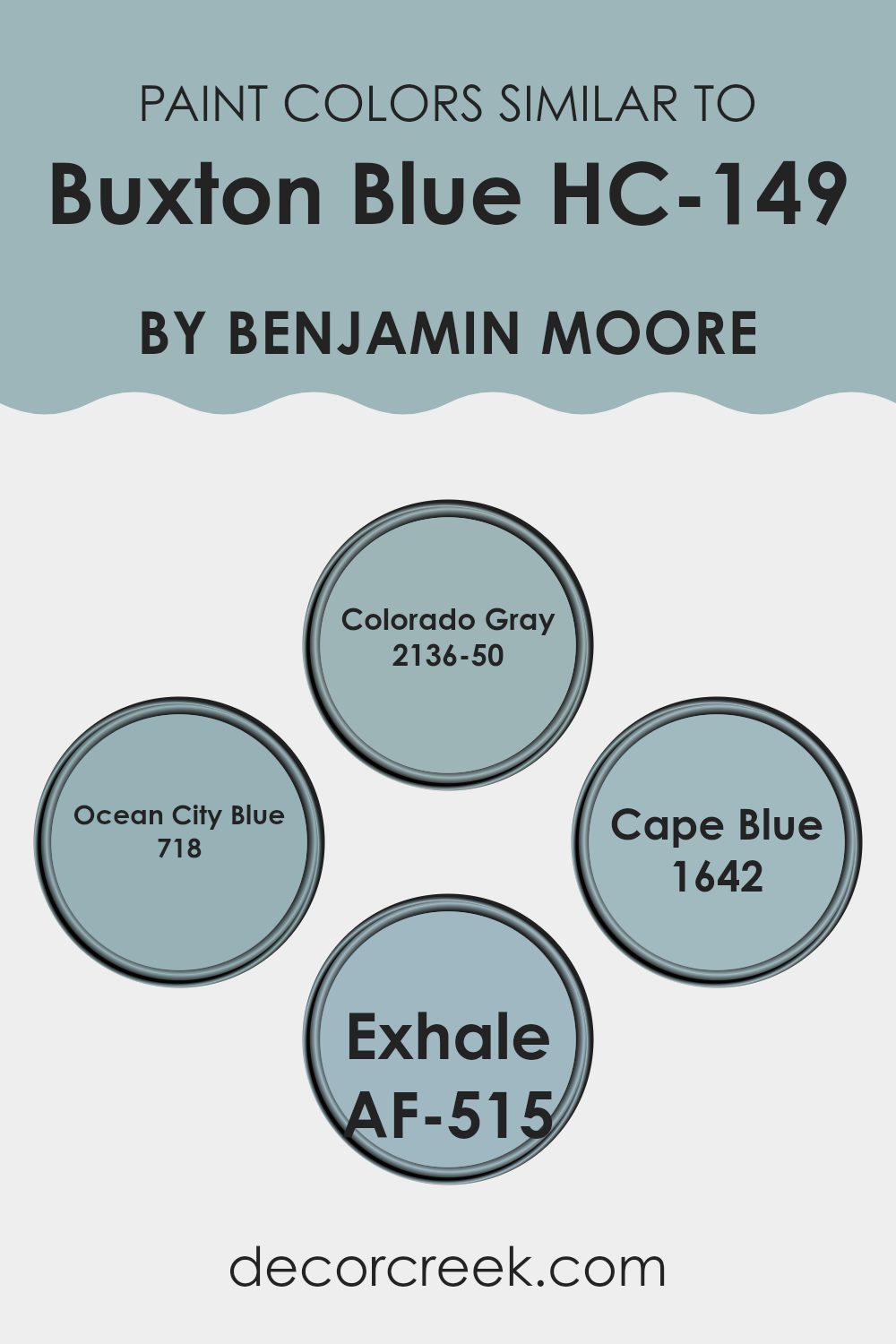
Colors that Go With Buxton Blue HC-149 by Benjamin Moore
Choosing the right colors to complement Buxton Blue HC-149 by Benjamin Moore is key in creating a pleasing and harmonious area. When selecting companion colors like Iceberg 2122–50 or Blue Echo AF–505, it’s important because each hue brings out different qualities in Buxton Blue, providing balance and adding depth to your decor.
For instance, Iceberg is a lighter, almost airy shade, which gives a fresh, crisp contrast to the deeper tones of Buxton Blue. On the other hand, Blue Echo is a darker blue that pairs well with Buxton Blue, reinforcing a strong but balanced blue theme throughout the area.
Yarmouth Blue HC-150 is another excellent match as it shares similar blue and green undertones with Buxton Blue, creating a smooth and seamless look. Calypso Blue 727 offers a vibrant, somewhat oceanic vibe that injects a bold energy into the mix, making the environment more dynamic. Varsity Blues 756 brings a traditional, almost collegiate feel with its deep, rich blue, setting a more grounded and sturdy atmosphere when paired with Buxton Blue.
Lastly, Jamestown Blue HC-148 has a subtle green undertone which can help in establishing a feeling of freshness and vitality in areas where these blues come together. These partner colors make it easy to set the mood and style of any area, ensuring every element works together just right.
You can see recommended paint colors below:
- 2122-50 Iceberg
- AF-505 Blue Echo
- HC-150 Yarmouth Blue
- 727 Calypso Blue
- 756 Varsity Blues
- HC-148 Jamestown Blue
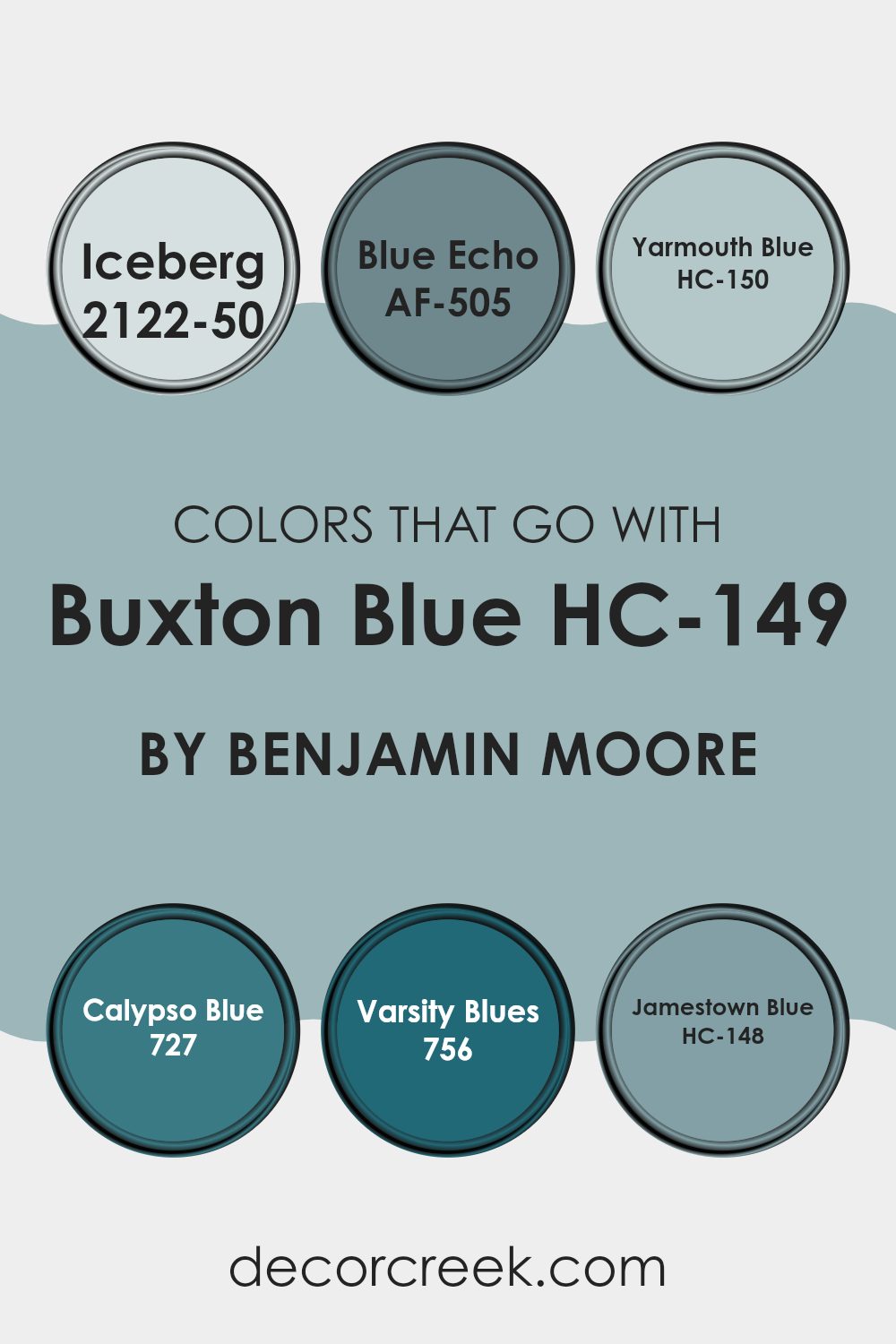
How to Use Buxton Blue HC-149 by Benjamin Moore In Your Home?
Buxton Blue HC-149 is a refreshing paint color from Benjamin Moore that offers a blend of blue with a hint of green, making it an adaptable choice for any home. Its calmness is perfect for creating a relaxing atmosphere in areas like bedrooms or bathrooms. The lightness of Buxton Blue also makes it ideal for smaller rooms, giving them a more open and airy feel.
You can easily use this color in your living room as well, perhaps on an accent wall to add a gentle splash of color without overpowering the area. Pairing it with neutral furniture and decor helps maintain a balanced look.
Furthermore, Buxton Blue works beautifully in a kitchen, on cabinets or walls, where it pairs nicely with white or wood finishes for a fresh, clean aesthetic. Overall, Buxton Blue HC-149 is a flexible color choice that can freshen up any room, bringing a calm and welcoming vibe.
Buxton Blue HC-149 by Benjamin Moore vs Colorado Gray 2136-50 by Benjamin Moore
Buxton Blue and Colorado Gray, both by Benjamin Moore, have distinct personalities in the world of paint colors. Buxton Blue offers a refreshing, subtle blue with a hint of green that can make any room feel fresh and inviting. It’s like looking at a calm, clear sky which is adaptable and blends well with various decor styles.
On the other hand, Colorado Gray is a cooler, more neutral gray with blue undertones providing a steadier and more muted presence. This color pairs nicely in areas that you want to feel more grounded and relaxed, without drawing too much attention.
Both colors are great choices for creating a calm atmosphere in your home, but they serve different moods and themes. Buxton Blue feels more lively and light, making it better for areas like kitchens and bathrooms. Colorado Gray, calmer and more subdued, works well in bedrooms and living rooms where a sense of calm is desirable.
You can see recommended paint color below:
- 2136-50 Colorado Gray
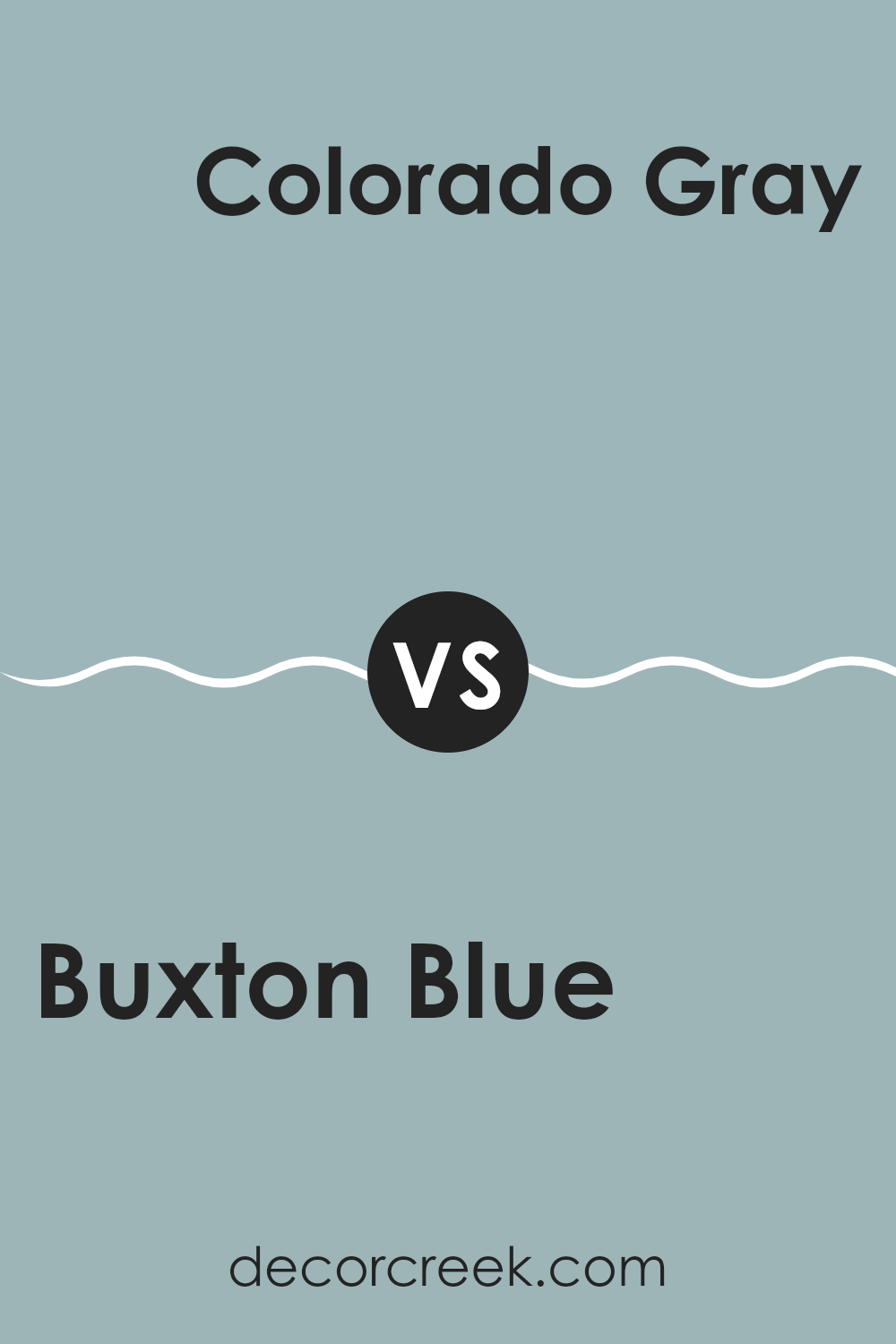
Buxton Blue HC-149 by Benjamin Moore vs Cape Blue 1642 by Benjamin Moore
The Buxton Blue and Cape Blue are both created by Benjamin Moore but they have a few key differences. Buxton Blue has a faint green undertone which gives it a fresh and light appearance, making rooms feel airy and bright.
It’s adaptable and works well in various areas, reflecting more light. On the other hand, Cape Blue appears slightly darker and carries a subtle gray influence, providing a cooler, more muted look.
This makes it excellent for creating a cozy and calming atmosphere in areas like bedrooms or offices where you might want a bit of a retreat from the everyday hustle. Both colors offer a calm blue palette but the choice between the two would depend on how much warmth or coolness you want in your area, as well as the type of ambiance you’re aiming to achieve.
You can see recommended paint color below:
- 1642 Cape Blue
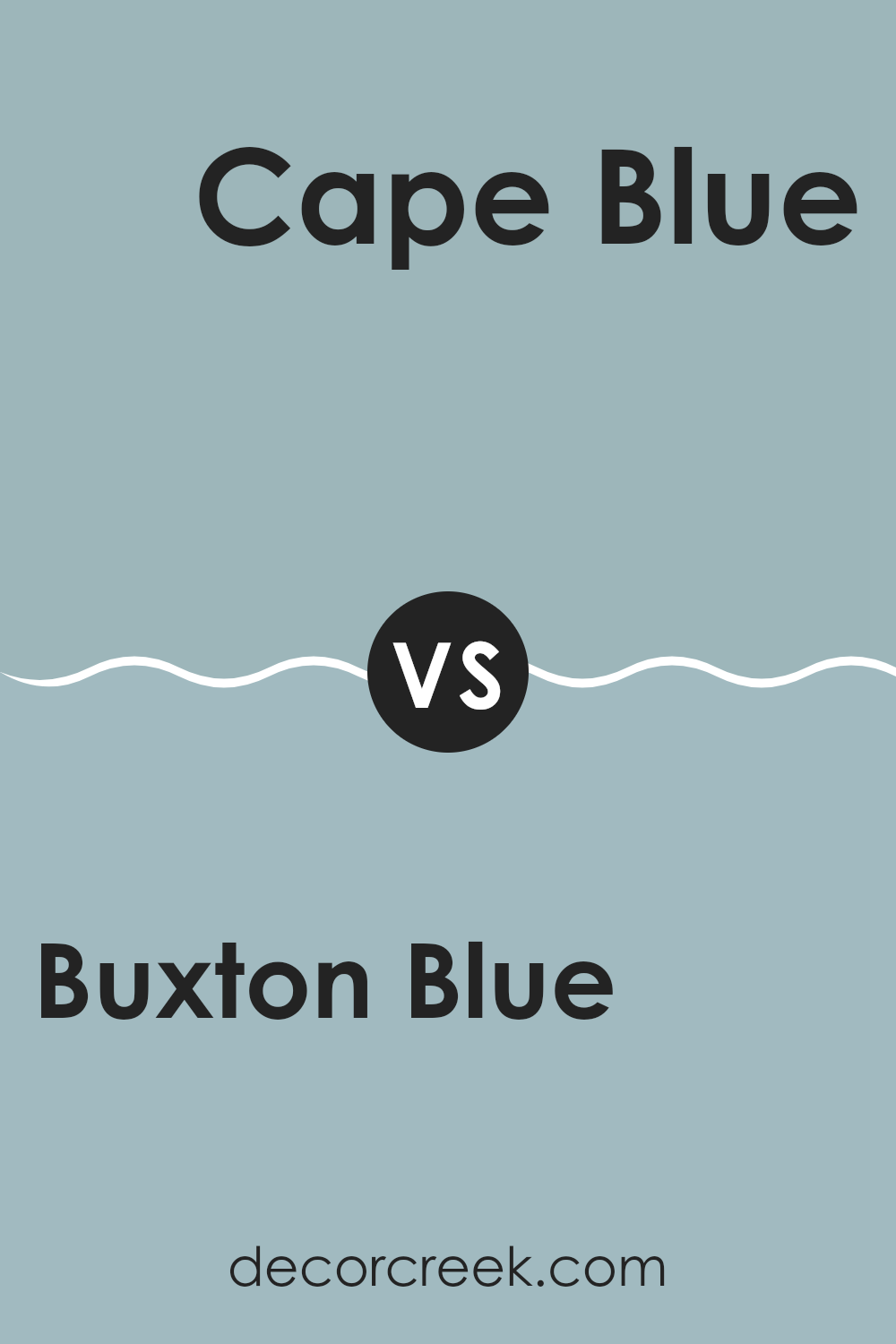
Buxton Blue HC-149 by Benjamin Moore vs Ocean City Blue 718 by Benjamin Moore
Buxton Blue and Ocean City Blue are both paint colors by Benjamin Moore, but they have distinct tones. Buxton Blue is a light, subtle shade of blue with a hint of gray. It gives a fresh and airy feel, ideal for creating a relaxed atmosphere in a room. It works well in areas like living rooms and bedrooms where you want a calming effect without the color being too strong.
On the other hand, Ocean City Blue is a brighter, more vibrant blue. It has a cheerful and energetic feel, making it perfect for areas where you want to add some cheerfulness, like bathrooms or kids’ rooms. This color stands out more on the walls compared to Buxton Blue, which blends more softly into its surroundings.
In summary, if you are looking for a light and understated blue, Buxton Blue is the way to go. However, if you prefer something that makes more of a statement, Ocean City Blue would be a better choice.
You can see recommended paint color below:
- 718 Ocean City Blue

Buxton Blue HC-149 by Benjamin Moore vs Exhale AF-515 by Benjamin Moore
Buxton Blue and Ocean City Blue are both paint colors by Benjamin Moore, but they have distinct tones. Buxton Blue is a light, subtle shade of blue with a hint of gray. It gives a fresh and airy feel, ideal for creating a relaxed atmosphere in a room. It works well in areas like living rooms and bedrooms where you want a calming effect without the color being too strong.
On the other hand, Ocean City Blue is a brighter, more vibrant blue. It has a cheerful and energetic feel, making it perfect for areas where you want to add some cheerfulness, like bathrooms or kids’ rooms. This color stands out more on the walls compared to Buxton Blue, which blends more softly into its surroundings.
In summary, if you are looking for a light and understated blue, Buxton Blue is the way to go. However, if you prefer something that makes more of a statement, Ocean City Blue would be a better choice.
You can see recommended paint color below:
- AF-515 Exhale
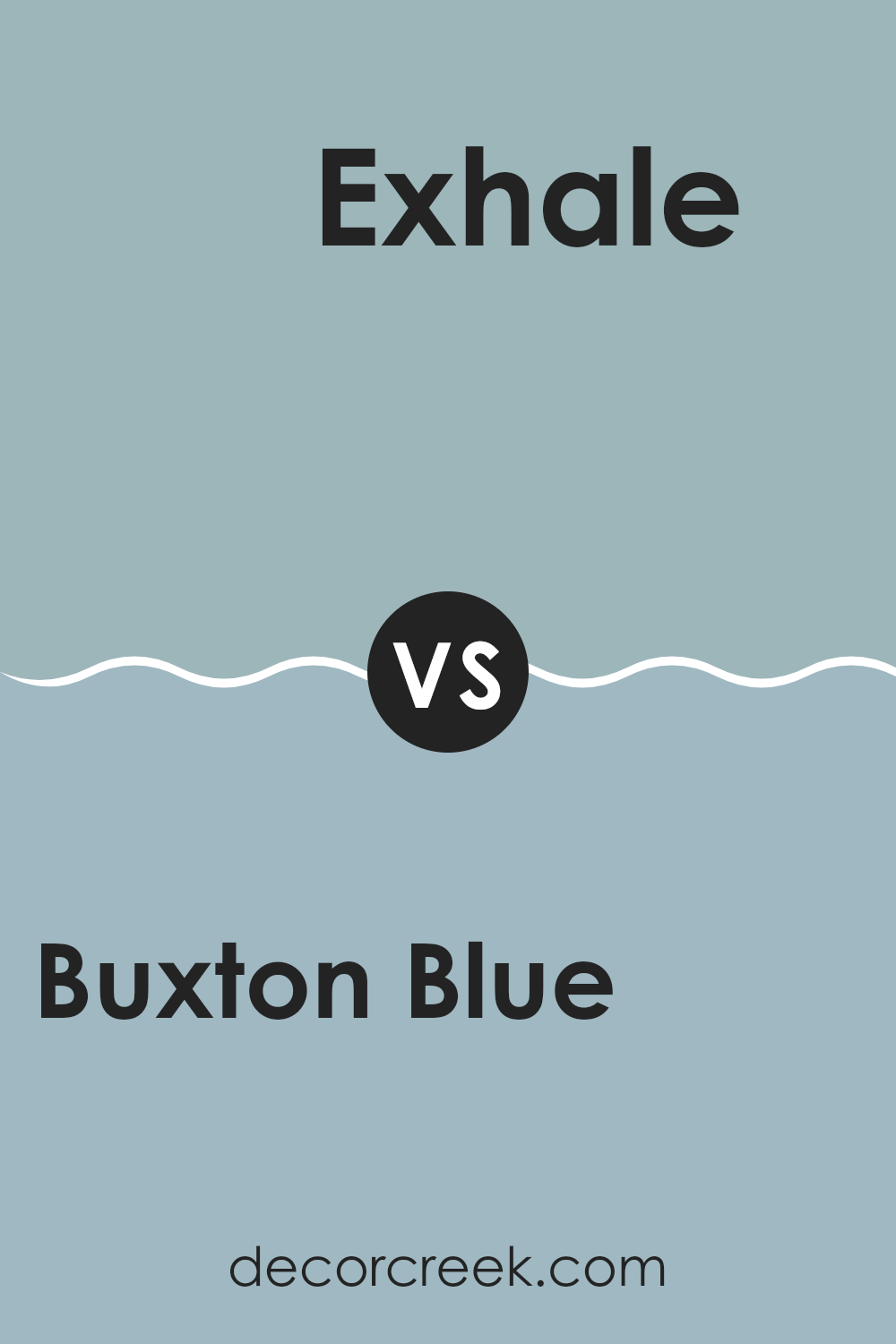
I just finished reading an interesting article about a paint color called HC-149 Buxton Blue by Benjamin Moore, and I have to say, I learned quite a bit! Buxton Blue is not just any blue; it’s a very special shade that can make any room feel cozy and welcoming. The color reminds me of a clear sky on a bright sunny day or the calm ocean which makes you feel peaceful just by looking at it.
The article mentioned how Buxton Blue works well in different parts of the house like the living room, bedroom, or even the kitchen. It also seems like a great choice because it looks good with many other colors. Whether you pair it with light colors like white and beige or even some darker shades, it still looks fantastic!
One cool thing I found out is that Buxton Blue can also help make an area look brighter and more alive, especially in rooms that don’t get much light. So, if someone has a room that feels a bit dull, this color might be the perfect pick to cheer it up.
Overall, HC-149 Buxton Blue by Benjamin Moore seems like a wonderful color choice for anyone looking to add a fresh, calm, and friendly touch to their home. It’s amazing how a simple thing like a new paint color can change the feeling of an area so much! I think many people, including families looking to spruce up their homes, will find this color very useful and lovely.

Ever wished paint sampling was as easy as sticking a sticker? Guess what? Now it is! Discover Samplize's unique Peel & Stick samples.
Get paint samples



